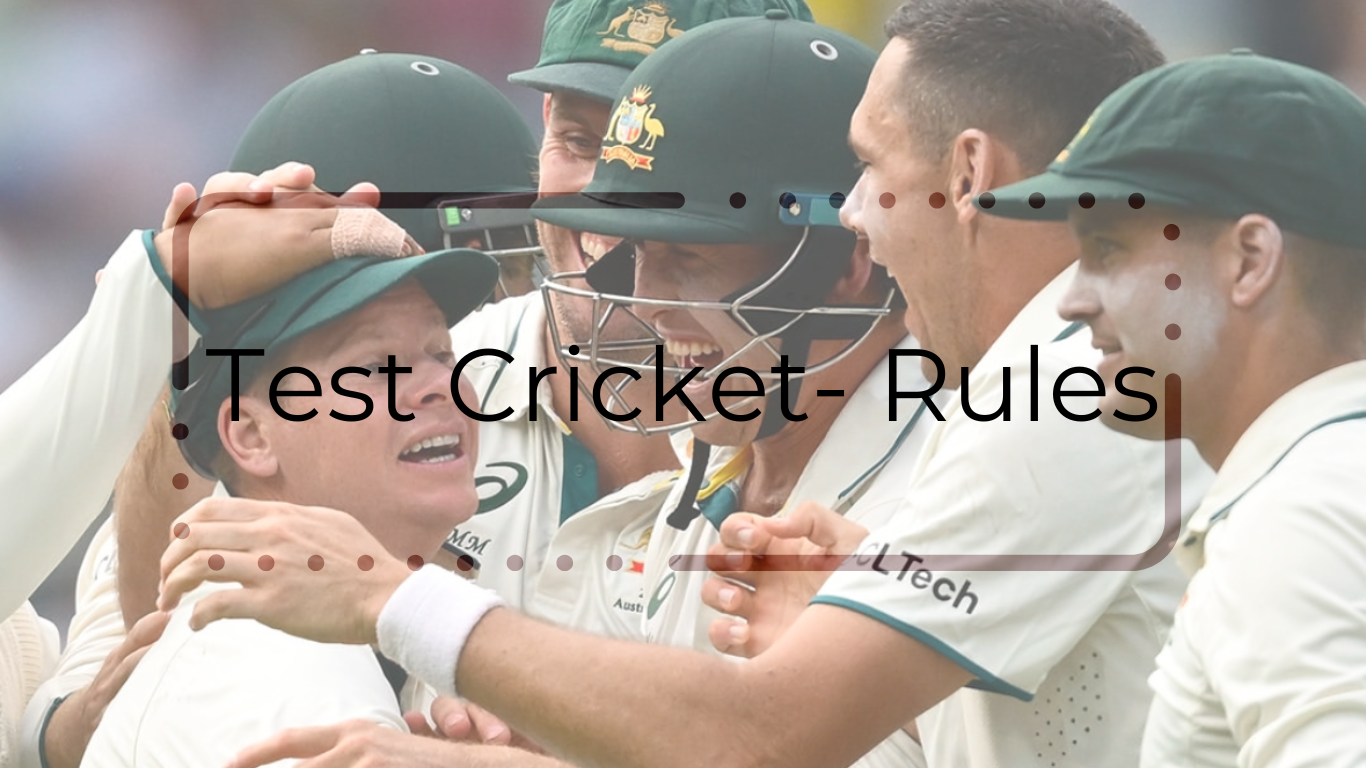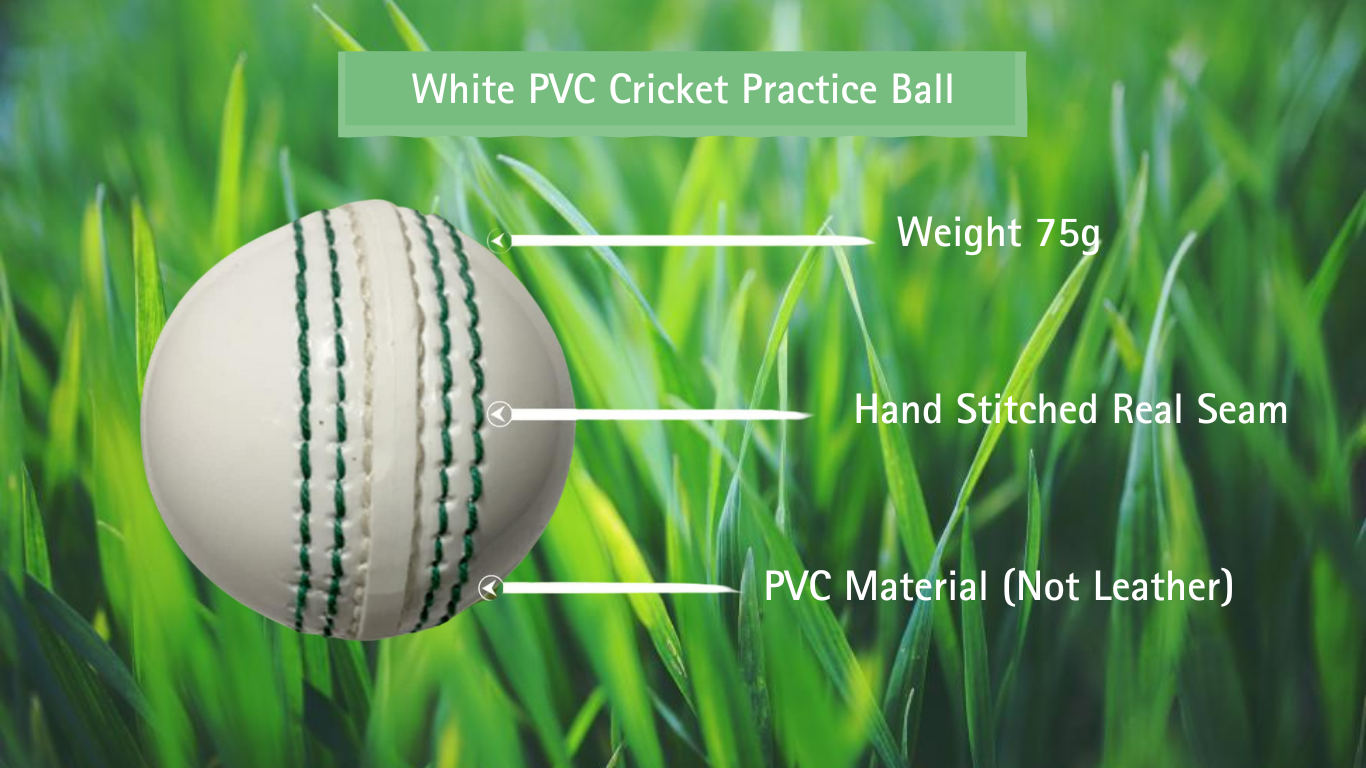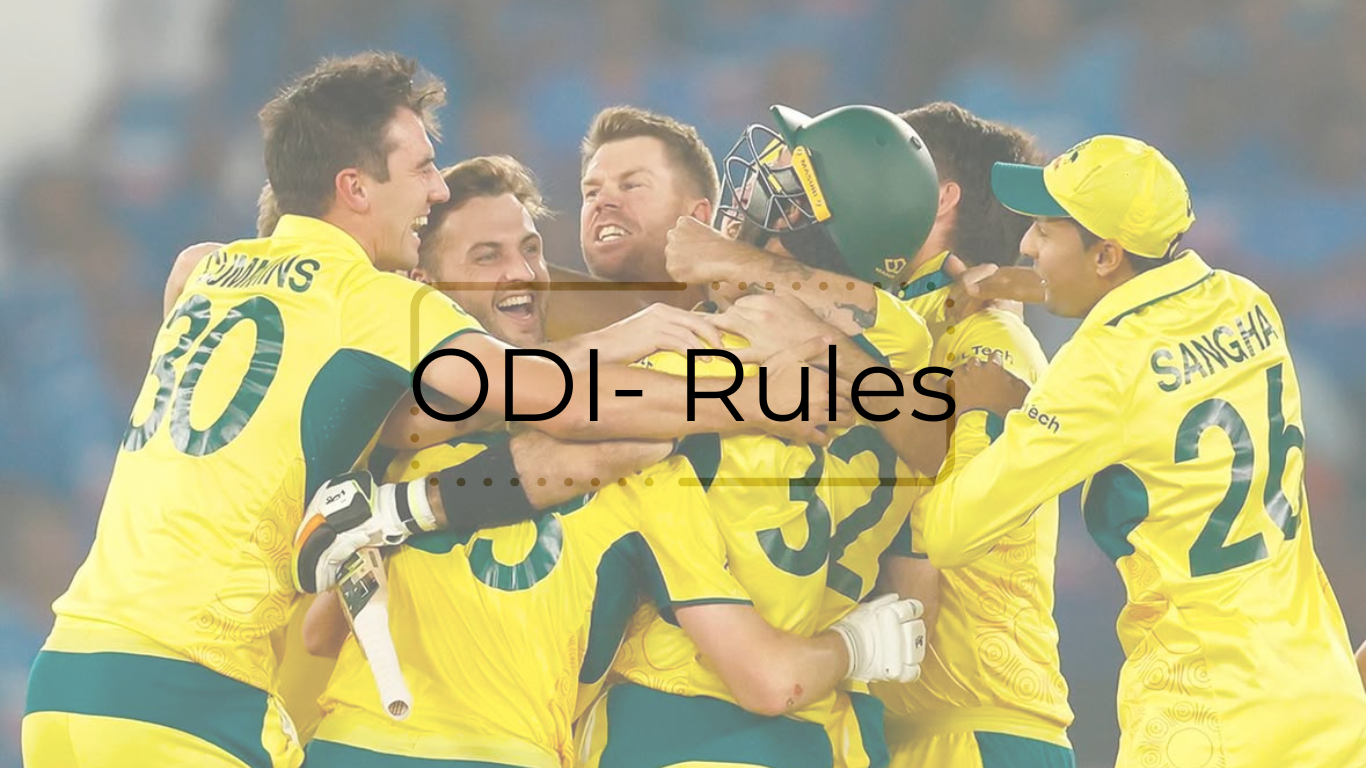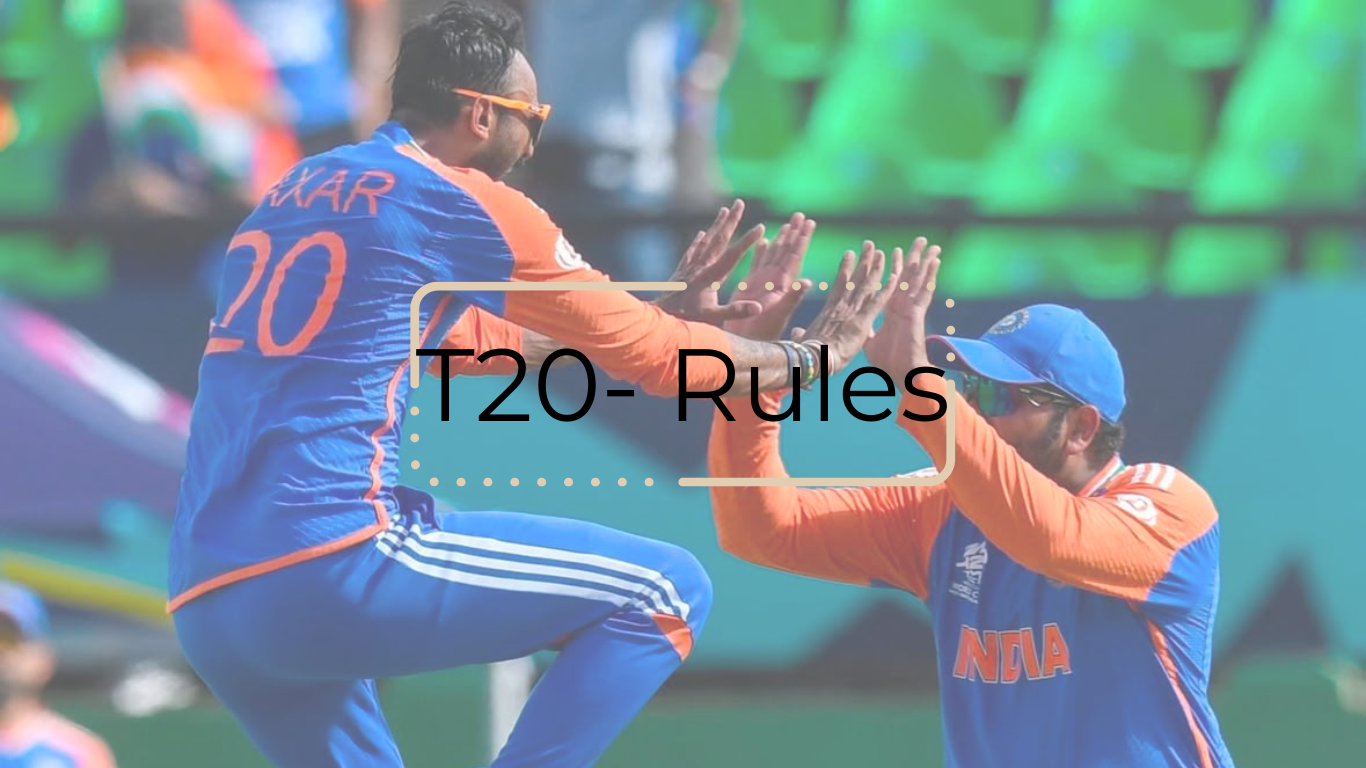Rules of Cricket – Test Match:
1. Players and Teams
- Each team comprises 11 players, with a maximum of 6 substitute fielders nominated before the toss.
- Substitutes can only field and cannot bowl, bat, or act as captain unless in exceptional cases.
- Captains are responsible for ensuring fair play and upholding the Spirit of Cricket.
- Concussion replacements are allowed if a player suffers a head or neck injury during play, subject to ICC approval. The replacement must be a like-for-like player.
2. Match Officials
- Includes two on-field umpires, a third umpire for reviews, and a match referee.
- Umpires control the match, ensure rules compliance, and have the authority to decide on fair or unfair play.
3. Equipment and Playing Area
- The ball weighs 5.5-5.75 ounces and must be of an approved brand.
- The bat’s dimensions are regulated, with a maximum width of 4.25 inches and length of 38 inches.
- Protective equipment like helmets and gloves must meet ICC safety standards.
- The pitch is a 22-yard rectangular area, with markings for creases and boundaries. The pitch must be natural turf, and specific rules govern its preparation and maintenance.
4. Match Duration and Overs
- A Test match lasts up to 5 days with 6 hours of play scheduled daily.
- A minimum of 90 overs is bowled daily, except on the final day, where 75 overs are required.
5. Innings and Follow-On
- Each team plays two innings. A follow-on can be enforced if the first batting team leads by 200+ runs.
- Captains can declare an innings at any time.
6. Scoring Runs and Boundaries
- Runs are scored when batsmen run between wickets or hit the ball to the boundary (4 runs for ground hits, 6 runs for over-the-boundary hits).
7. Dismissals
- Common ways include bowled, caught, leg before wicket (LBW), run-out, and stumped.
- Special dismissals include hitting the ball twice and obstructing the field.
8. Unfair Play
- Includes ball tampering, unfair fielding placements, and time-wasting.
- Umpires may issue warnings, award penalty runs, or suspend players for serious breaches.
9. Intervals and Delays
- Scheduled breaks include lunch (40 minutes) and tea (20 minutes).
- Drinks intervals occur mid-session, lasting up to 4 minutes.
- Play can be delayed or suspended due to weather, light, or unsafe conditions.
10. Decision Review System (DRS)
- Teams are allowed a limited number of reviews to contest on-field umpire decisions.
- Reviews are decided by the third umpire using video and technological aids. Teams must request reviews within 15 seconds of the on-field decision.
11. Spirit of Cricket
- Emphasizes respect among players, officials, and opponents.
- Fair play and acceptance of umpire decisions are core principles.
Source : ICC handbook
FAQs
How many overs are in a 5 day test?
In a 5-day Test match, there are typically 90 overs bowled per day, provided there are no interruptions.
- Over the course of the five days, this adds up to a total of 450 overs (90 overs x 5 days).
However, if the weather causes delays, the number of overs bowled in a day may be reduced. There are also allowances for the final day, where the number of overs may be adjusted to make up for any lost time.
How many breaks are in a Test match?
In a Test match, there are typically three main breaks:
- Lunch Break: Occurs after the first session, usually lasting 40 minutes.
- Tea Break: Happens after the second session, typically lasting 20 minutes.
- Dinner Break: On the final day or sometimes after a long second innings, this break may occur, but it’s not always the case.
Additionally, there are intervals between innings, where teams switch sides, and players can take short breaks.
How is a Test match won?
A Test match is won in one of the following ways:
- By scoring more runs: The team with the highest total after both teams have completed their two innings wins the match.
- By all-out: If one team dismisses the other team twice (all 10 wickets fall in both innings), they win the match.
- By forfeiting an innings: A team can forfeit their innings, which is extremely rare. This can happen if the team decides not to continue batting, but the opposition wins automatically.
- By declaring an innings: A team can declare their innings, usually when they have scored enough runs, and feel confident that they can dismiss the opposing team in the remaining time.
- If time runs out without a result: If both teams fail to complete their innings and no team has a higher score, the match is declared a draw or a tie, depending on the circumstances.
What if a team bats for 5 days?
If a team bats for 5 days:
- Batting for 5 days without being dismissed: If the team bats for the full 5 days without being dismissed (and without declaring), the match would likely end in a draw. This situation is rare and occurs if the batting team is unable to set a target for the opposition or if there’s not enough time left for the second team to chase.
- Follow-on Option: According to Law 14, if the team that bats first leads by at least 200 runs, they can enforce the follow-on. This forces the second team to bat again immediately.
- Defensive Strategy: Batting for the full duration of 5 days can also be a strategy to save or draw the match, especially if the team is trying to avoid a loss or tire out the opposition.
In essence, if a team bats for 5 days, the result could be a draw, unless they declare or are forced into a follow-on situation by their opponent’s lead.
How long is dinner in Test cricket?
In Test cricket, the dinner break typically lasts 40 minutes and usually occurs after the second innings or on the final day, depending on the match situation.
Read More: Rules of Cricket – T20 Format
Read More: Rules of Cricket – ODI Format




One thought on “Rules of Cricket – Test Cricket”